Identification and management of children with difficult intravenous access

Identification of children with difficult intravenous access (DIVA) can help promote prompt escalation to an appropriately skilled clinician” Schults et al (2019). Abstract: BACKGROUND: Peripheral venous cannulation is considered a routine procedure, yet 50% of first attempt insertions fail, necessitating repeat insertion attempts. Identification of children with difficult intravenous access (DIVA) can help promote prompt […]
Air embolism following peripheral intravenous access

We present a case of symptomatic venous air embolism likely arising from peripheral intravenous access gained during an interventional pain procedure” Vinan-Vega et al 92019). Abstract: Air embolism is a rare, often misdiagnosed, potentially fatal condition. It is most frequently associated with invasive vascular procedures and mechanical ventilation. Air emboli developing from peripheral intravenous lines […]
ED visits and hospitalizations among hemodialysis patients
Previous reports indicated that patients on thrice-weekly hemodialysis (HD) had higher mortality rates after the 3-day interdialytic interval. However, day-of-the-week patterns of emergency department (ED) visits and hospitalizations remain under-investigated” Zhang et al (2019). Abstract: BACKGROUND AND OBJECTIVE: Previous reports indicated that patients on thrice-weekly hemodialysis (HD) had higher mortality rates after the 3-day interdialytic […]
Clinical features of BSI with peripheral versus central venous catheters

This study aimed to compare the clinical characteristics and prognoses of central venous catheter-associated bloodstream infections (CVC-BSIs) with peripheral venous catheter-associated BSIs (PVC-BSIs)” Tatsuno et al (2019). Abstract: INTRODUCTION: This study aimed to compare the clinical characteristics and prognoses of central venous catheter-associated bloodstream infections (CVC-BSIs) with peripheral venous catheter-associated BSIs (PVC-BSIs). METHODS: This retrospective […]
Peripherally inserted central catheters in critically ill patients

Implementation of education, training, and appropriate multidisciplinary approaches on PICC care among nurses and caregivers is the key to preventing complications” Duwadi et al (2018). Abstract: Peripherally inserted central catheter (PICC) is extensively used in critical care settings, because it plays a vital role in providing safe central venous entry. However, PICC is associated with […]
Authors review results of needleless connector decontamination research

We recently read with interest the systematic review and meta-analysis by Flynn et al,1 which aimed to “compare the effectiveness of connector decontamination with 70% alcohol wipes, alcoholic chlorhexidine gluconate wipes, or alcohol impregnated caps to prevent catheter-associated bloodstream infection (CABSI)” Aho Glélé et al (2019). Abstract: We recently read with interest the systematic review […]
Chylothorax and chylopericardium a complication of CVC use

The development of chylothorax and chylopericardium is an uncommon complication of the long-term use of central venous catheters” Livesay et al (2019). Abstract: The development of chylothorax and chylopericardium is an uncommon complication of the long-term use of central venous catheters. We describe a unique case of an end stage renal disease patient on hemodialysis […]
Peripherally inserted central catheter tip position in newborn infants
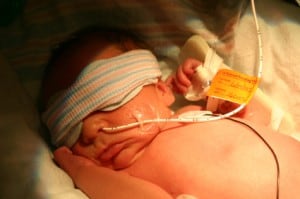
To evaluate the application of ultrasound for the localization of the tip position of peripherally inserted central catheters (PICCs) in newborn infants” Ren et al (2019). Abstract: OBJECTIVE: To evaluate the application of ultrasound for the localization of the tip position of peripherally inserted central catheters (PICCs) in newborn infants. STUDY DESIGN: This study was […]
Review of central venous catheter complications

The use of a central line or central venous catheterization was brought to attention in 1929 when Dr. Werner Forssmann self-inserted a ureteric catheter through his cubital vein and into the right side of his heart” Patel et al 92019). Abstract: The use of a central line or central venous catheterization was brought to attention […]
Peripheral IV catheter dwell time and risk of catheter failure

The risk of catheter failure may not remain constant throughout the dwell time. The results suggest that nurses should assess the insertion site frequently in the first 38 h” Wei et al (2019). Abstract: AIMS AND OBJECTIVES: To explore whether the risk of peripheral venous catheters failure remained constant throughout catheter use in adult patients. […]
Decreased hospital infections with improvement in CHG bathing

We employed a mathematical model to assess the impact of CHG patient bathing on central line-associated bloodstream infections (CLABSIs), catheter-associated urinary tract infections (CAUTIs), and hospital-onset Clostridium difficile (C diff) infections and the associated costs” Reagan et al 92019). Abstract: BACKGROUND: Multiple studies have shown that bathing with chlorhexidine gluconate (CHG) wipes reduces hospital-acquired infections […]
Persistent left superior vena cava identified by transesophageal echocardiography

During central venous cannulation, the presence of venous anomalies increases procedural complication rates” Horvath et al (2019). Abstract: A 70-year-old female with severe aortic stenosis presented for aortic valve replacement and underwent routine preoperative Swan-Ganz catheter placement. Transesophageal echocardiography demonstrated a dilated coronary sinus with a catheter present. A high suspicion of venous anomaly prompted […]
Candida albicans biofilm formation in clinical lipid emulsions

Receipt of parenteral nutrition (PN) remains an independent risk factor for developing catheter-related blood stream infections (CR-BSI) caused by fungi, including the polymorphic fungus Candida albicans that is notoriously adept at forming drug-resistant biofilm structures” Willems et al 92019). Abstract: Receipt of parenteral nutrition (PN) remains an independent risk factor for developing catheter-related blood stream […]
Development of a pediatric vascular access team

The purpose of the study was to examine if a pediatric peripheral vascular access algorithm with a pediatric vascular access team (PPVAA-VAT) improved IV placement outcomes compared with Pediatric Peripheral Vascular Access Algorithm (PPVAA)-alone use” Hartman et al (2019). Abstract: INTRODUCTION: Intravenous (IV) placement outcomes in pediatric patients need to be improved. The purpose of […]
Sonographic screening of internal jugular vein to detect catheter related thrombosis

Catheter-related IJV thrombosis is a frequent complication in ICU patients and is associated with the increased risk of CLABSI. Ultrasound screening is simple, feasible and accurate in diagnosing IJV thrombosis” Nm Bhat et al (2019). Abstract: BACKGROUND AND AIMS: Internal jugular vein (IJV) cannulation is a common procedure in the ICU with thrombosis being an […]
Impact of nursing education on CLABSI rates

The effectiveness of educational program on hand hygiene compliance was reflected in the improvement of posttest score, reduced number of missed opportunities and reduction of CLABSI rates in ICU” Acharya et al (2019). Abstract: BACKGROUND AND AIMS: Central line associated bloodstream infections (CLABSI) have a higher incidence in the intensive care units of developing countries. […]
Sustainability of a standardised assessment for preventing ICU complications
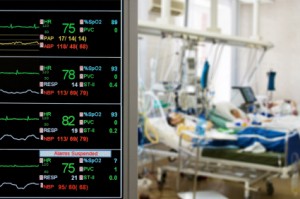
This paper describes nurses’ perceptions of implementation strategies and the potential sustainability of a practice change intervention to prevent complications in a Malaysian ICU” Soh et al (2019). Abstract: Background: Quality improvement projects have been widely adopted to prevent complications in the ICU. Objective: This paper describes nurses’ perceptions of implementation strategies and the potential […]
Clinical use of Colistin in biofilm-associated infections

Biofilm is an adaptive bacterial strategy whereby microorganisms become encased in a complex glycoproteic matrix. The low concentration of oxygen and nutrients in this environment leads to heterogeneous phenotypic changes in the bacteria, with antimicrobial tolerance being of paramount importance” Lora-Tamayo et al (2019). Abstract: Biofilm is an adaptive bacterial strategy whereby microorganisms become encased […]
Care and maintenance of peripheral intravenous cannula

The study is mainly concerned about the care and maintenance of peripheral intravenous cannulation: to determine the knowledge and practice of nurses towards care and maintenance of IV cannula and to find out the obstacles encountered in caring and maintaining IV cannula” Osti et al (2019). Abstract: AIM: The study is mainly concerned about the […]
Literature review relating to medical adhesive related skin injuries

This article reviews the literature related to the causes of medical-adhesive-related skin injuries (MARSIs) and the reported patient effects, in particular pain and skin trauma and highlight some ‘at-risk’ patient groups and potential actions to minimise risk” Collier (2019). Abstract: The skin is the largest and one of the most important organs of the body […]
Incidental ultrasound finding during internal jugular vein cannulation
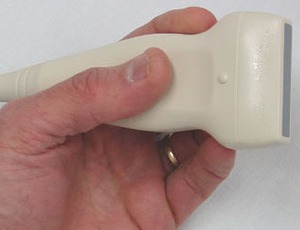
We report a case study of fat embolism seen on ultrasound at right internal jugular vein during central venous cannulation in a patient diagnosed with fat embolism syndrome. This case demonstrates the importance of ultrasound for evaluation of trauma cases with suspicion of fat embolism” Adi et al (2019). Abstract: BACKGROUND: We report a case […]
Central venous catheter-associated thrombosis in children with congenital hyperinsulinism

To our knowledge, this is the first study to evaluate CVC-associated thrombosis in patients with congenital hyperinsulinism (CHI)” Yau et al (2019). Abstract: SUMMARY: Congenital hyperinsulinism (CHI) is an important cause of severe hypoglycaemia in infancy. To correct hypoglycaemia, high concentrations of dextrose are often required through a central venous catheter (CVC) with consequent risk […]
Depression and quality of life in older adults on hemodialysis

The aim of this study was to evaluate the prevalence of depression, its associated factors and its impact on quality of life in an older population on hemodialysis” Alencar et al (2019). Abstract: OBJECTIVE: Depression is highly prevalent in hemodialysis patients, but few studies have evaluated older hemodialysis patients. The aim of this study was […]
Risk factors for central line-associated bloodstream infections in children

The aim of this study was to examine the epidemiology of CLABSIs in tunneled CVCs and analyze their risk factors in a general pediatric population” Paioni et al (2019). Abstract: BACKGROUND: Central line-associated bloodstream infections (CLABSIs) are among the most common complications of central venous catheters (CVCs). The aim of this study was to examine […]
Femoral venous catheter in extremely low-birth-weight infants
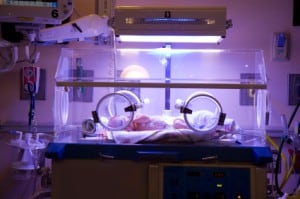
To assess the applicability of the insertion of small diameter catheters through the femoral vein in extremely low-birth-weight (ELBW) infants” Bergón-Sendín et al (2019). Abstract: OBJECTIVE: To assess the applicability of the insertion of small diameter catheters through the femoral vein in extremely low-birth-weight (ELBW) infants. STUDY DESIGN: All femoral small diameter catheters (Silastic or […]
Clinical outcomes and economic impact of hemodialysis
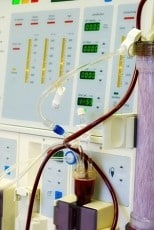
We compared patients with pre-ESRD fistula surgery who initiated dialysis with a catheter versus a fistula in terms of the frequency of post-dialysis vascular access procedures and complications and their economic impact” Al-Balas et al (2019). Abstract: BACKGROUND: Patients with advanced chronic kidney disease frequently undergo arteriovenous fistula creation prior to reaching end-stage renal disease […]
Microbiology and prevalence of E2SKAPE-resistant strains in CRBSI

The aim of this study was to describe the microbiology of catheter-related bloodstream infections (CRBSIs) in cancer patients and to compare the prevalence of MDR ESKAPE microorganisms (Enterococcus faecium, Staphylococcus spp, Klebsiella spp, Acinetobacter baumannii, Pseudomonas aeruginosa, and Enterobacter spp) plus Escherichia coli (E2SKAPE)” de la Cruz-Hernández et al (2019). Abstract: INTRODUCTION: Central venous catheters […]
PICCs and central venous disease in hemodialysis patients

PICCs can cause CVD, and the basilic vein, which is regarded as the important last option for native arteriovenous fistula (AVF) creation in end-stage renal disease (ESRD) patients, is destroyed frequently after its use as the entry site of PICC” Park et al (2019). Abstract: Central venous disease (CVD) is difficult to treat and often […]
Peripherally inserted central catheters in critically ill newborns

The aim of this study was to retrospectively analyze the use of PICCs in our clinic for critically ill newborns to evaluate the relationship between catheter related factors and the occurrence of complications” Li et al (2019). Abstract: Peripherally inserted central catheters (PICCs) can provide nutritional and medical support for very low birth weight or […]
Safety of umbilical catheters and PICCs for VLBW infants
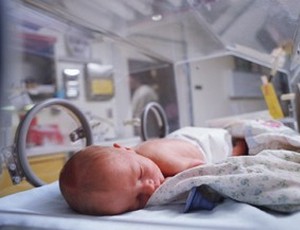
The incidence of complications associated with the use of UVCs and PICCs in VLBW infants did not significantly differ in our study” Konstantinidi et al (2019). Abstract: Background and Objective: Peripherally inserted central catheters (PICC) and umbilical venous catheters (UVC) are frequently used for vascular access in neonatal intensive care units (NICUs). While there is […]

